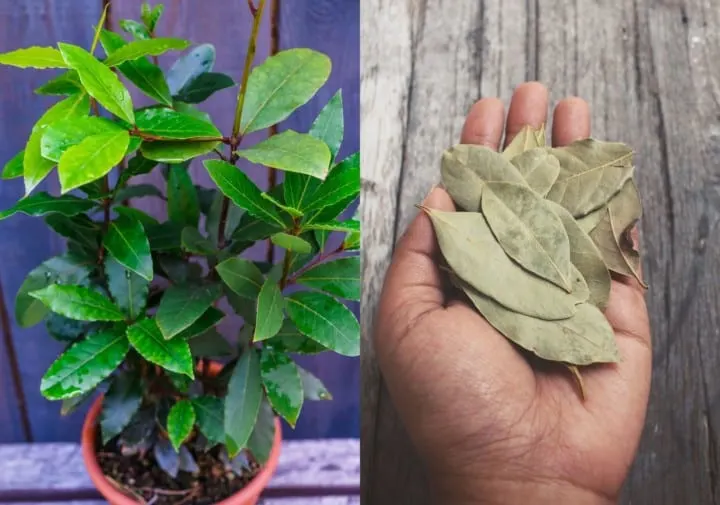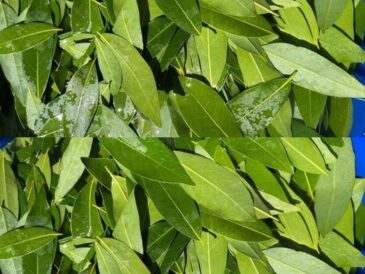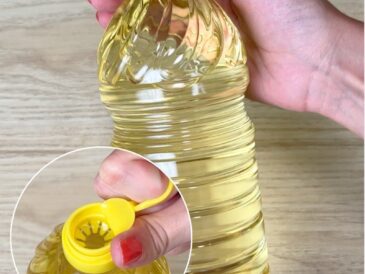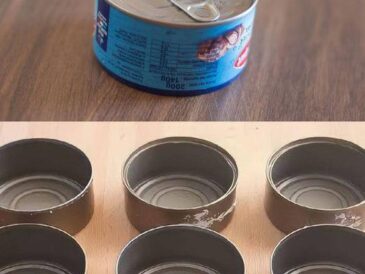Bay Hedging
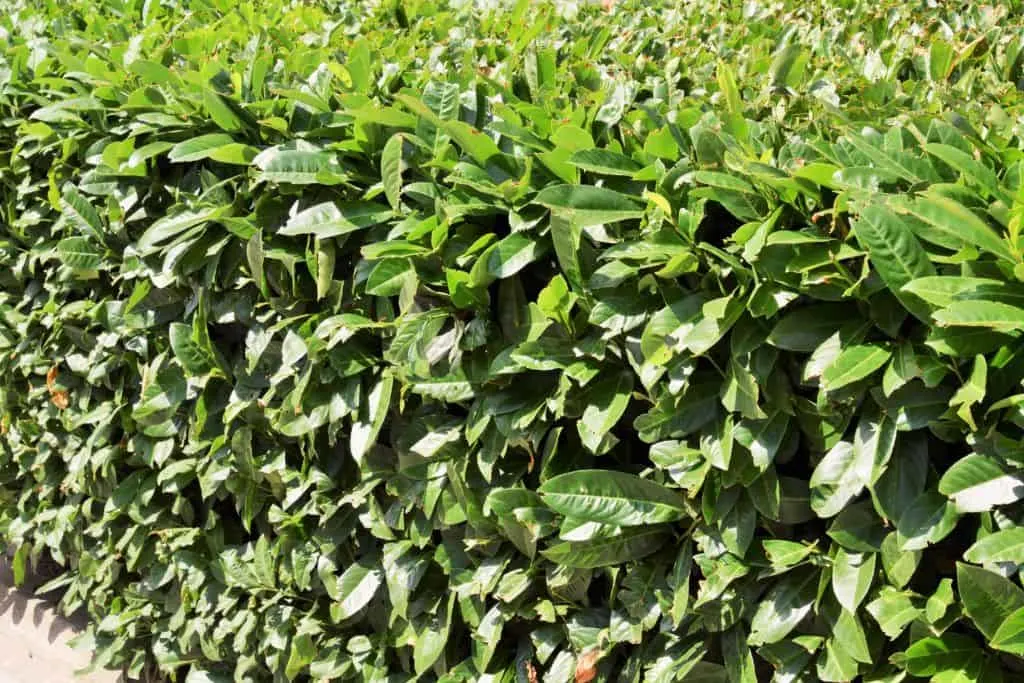
Light summer pruning will also help to keep a bay hedge in shape. If planting a new bay hedge, how many plants you will need to purchase to create a solid hedge will depend on how you purchase them.
If you buy bare root bay trees in winter, these should be placed in a double row, with 4.5 -6 plants per metre, depending on their size. With root balled specimens, or pot grown bays, you will require around 2 – 3.5 plants per metre.
Pruning a Bay Shrub or a Bay Tree
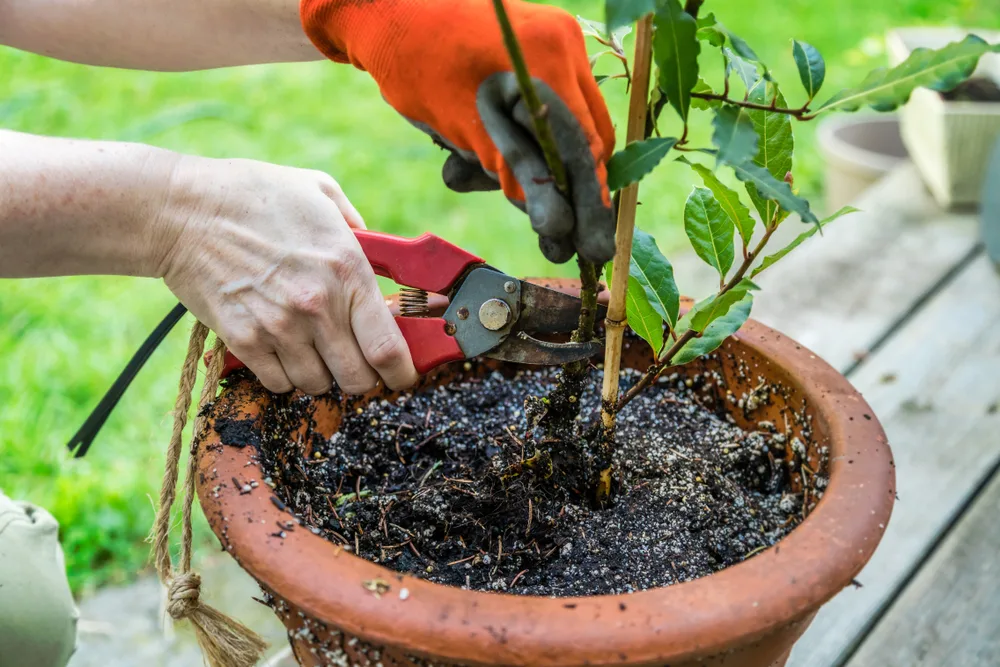
If you are growing a bay shrub or bay tree as an individual specimen plant then usually only light summer pruning for shape and size will be required. Simply cut back to a lower leaf or flower bud if required to keep the shrub looking good.
A mature bay tree will not usually require much pruning, but can tolerate hard pruning if required. However, it will be slow to recover and generate new growth. It is better to renovate large, overgrown bays over two or three seasons, in the late spring or early summer.
Watering & Feeding Bay
As mentioned above, bay is intolerant of overwatering, and it is generally a little better to under water rather than overwatering. Like other Mediterranean plants, bay trees can cope relatively well with dry conditions, though of course they should not be left to dry out entirely.
Bay does not require particularly fertile soil and so it is also important not to over-feed your plant. A gentle, organic plant feed given every couple of weeks in the summer months, however, may be beneficial, especially for plants in containers.
Identifying Problems When Growing a Bay Tree
Yellow Leaves:
These are usually a sign of waterlogging or cold weather damage, though can also indicate a nutrient deficiency, especially in container grown bay trees.
Leaf Spots:
This usually indicates a problem with waterlogging or wet weather. Plants in containers can be more prone to this problem. It is often a sign that the compost has to be refreshed and the plant should be re-potted.
Peeling Bark/ Cracking on Lower Stems:
This is usually caused by harsh winter weather and while it looks rather bad, as long as the rest of the plant is growing normally, it should not be fatal and your bay tree should recover.
Brown Leaves:
This is another sign of environmental problems. Pay attention to drainage, watering and shelter and it may not mean the end of your bay tree.
Curled leaves with pale-yellow/ brown edges:
If the leaves curl over, looking unsightly and discoloured, look under the curled leaf edges for little grey-white insects. You may have a case of bay sucker. While unsightly, the good news is that the long term health of the plant is not usually affected. Pick off and dispose of affected leaves.
Scale insects:
The bay can be affected by soft or horse chestnut scale. These tiny insects can be seen on the underside of leaves or on stems. You may not have to do anything, as the growth of the bay may be unaffected. However, attracting or introducing predatory insects can help to redress the natural balance in your garden.
Parasitoid wasps are sometimes introduced as a biological control for soft scale.
How To Dry Bay Leaves
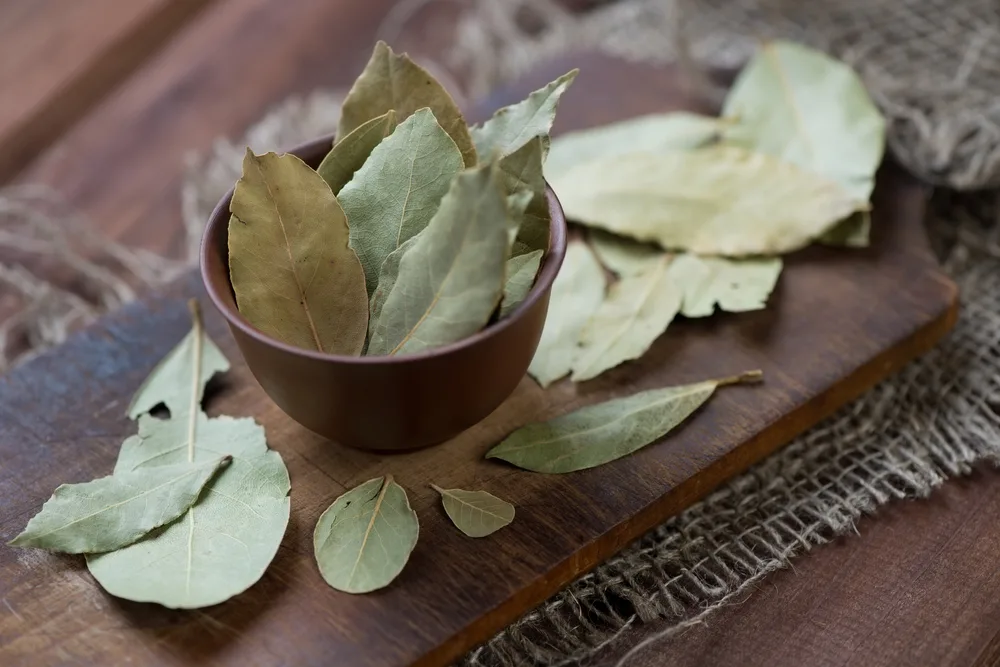
Leaves are best picked early in the morning to preserve their essential oil.
Once picked, place the bay leaves on paper towels so they aren’t touching each other. Place in a warm, dry, well ventilated room and leave for two weeks – turning once half way through. After two weeks, examine your bay leaves. If they are still dark green or soft in places, leave for another week.
Once you are sure your bay leaves are dry, store in a glass jar for using in the ways below.
You can speed up the drying process by drying bay leaves in a dehydrator.
How To Use Bay Leaves

Edible Uses for Bay Leaves
Bay laurel leaves are a crucial ingredient in French cuisine and part of a ‘bouquet garni’. They are used tied together with string along with other herbs in a range of soups, stews and other recipes before being removed at the end of cooking.
The leaves can be used fresh or dried. Dried leaves impart a stronger flavour but will lose their flavour if stored for more than one year.
Other Uses for Bay Leaves
Bay leaves also have a long history of use in herbal medicine, and are also used as a strewing herb, or as an insect repellent.
In your garden, it may also protect neighbouring plants from certain insects, and in store, it can protect other produce from weevils.
Of course, the leaves were also traditionally used to make laurel wreaths for emperors, generals and poets and can also simply be used in arrangements to add their pleasant fragrance to your home.
